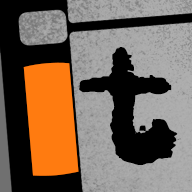Joshua, that isn't true. While a portable DVD player would work for many people, a professional monitor gives you a few extras.
1. It has precise color and contrast, so you can see a closer image to what you are actually shooting. As opposed to a cheap screen, where color and contrast is far from close.
2. You get SDI input/output, some even come with HDMI in AND out. These can help in many many ways. One example would be to connect an HDMI cable through a second monitor by using the in/out connections. SDI connectors are generally stronger than HDMI. So when using pro cameras, you want the best cable type to get the best output.
3. You get a sharper image. Even though some cheaper screens can do a good job with this as well.
4. Because some screens are color-calibrated, you can use them to work properly on color correction in post.
With all that said, for anyone beginning and for most small budget, there is no real need to shell out that extra cash for a pro monitor.





